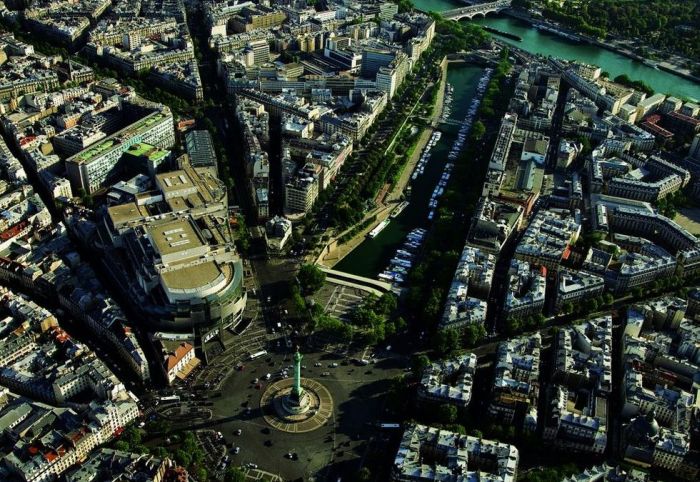|
|
Bird's-eye View Of Paris, France
|
The greatest development in Paris's history began with the Industrial Revolution creation of a network of railways that brought an unprecedented flow of migrants to the capital from the 1840s. The city's largest transformation came with the 1852 Second Empire under Napoleon III; his préfet, Baron Haussmann, levelled entire districts of Paris' narrow, winding medieval streets to create the network of wide avenues and neo-classical façades that still make up much of modern Paris; the reason for this transformation was twofold, as not only did the creation of wide boulevards beautify and sanitize the capital, it also facilitated the effectiveness of troops and artillery against any further uprisings and barricades for which Paris was so famous.
The Second Empire ended in the Franco-Prussian War (1870–1871), and a besieged Paris under heavy bombardment surrendered on 28 January 1871. The discontent of Paris' populace with the new armistice-signing government seated in Versailles resulted in the creation of the Paris Commune government, supported by an army created in large part of members of the city's former National Guard that would both continue resistance against the Prussians and oppose the army of the "Versaillais" government. The Paris Commune ended with the Semaine Sanglante ("Bloody Week"), during which roughly 20,000 "Communards" were executed before the fighting ended on 28 May 1871. The ease with which the Versaillais army overtook Paris owed much to Baron Haussmann's renovations.
France's late 19th-century Universal Expositions made Paris an increasingly important centre of technology, trade, and tourism. Its most famous were the 1889 Exposition universelle to which Paris owes its "temporary" display of architectural engineering progess, the Eiffel Tower, a structure that remained the world's tallest building until 1930; the 1900 Universal Exposition saw the opening of the first Paris Métro line.
|
|









